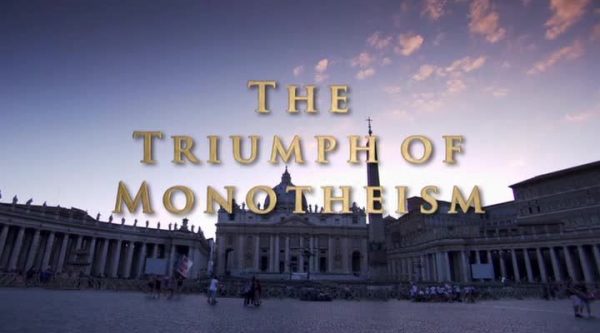The Secret Story of the Knights Templar Episode 2 – Emerging in the Middle Ages, the Knights Templar stood as a beacon of valor and discipline, only to mysteriously vanish after a mere two centuries in existence. Despite their abrupt disappearance, the legends and tales of their time continue to fuel our imagination today. Adorned in white overcoats marked with the iconic red cross, the Templars were renowned for their unyielding courage and unmatched skill in battle. Beyond their military prowess, the riches they garnered have become a significant part of their historical narrative. In this comprehensive episode, we delve deep into the reality behind the immense wealth of the Templars, offering an exploration into their expert methods of generating and accumulating fortune. As we turn back the pages to the mid-12th century, the burgeoning fame of the Knights Templar paints a picture of a formidable economic powerhouse, swiftly growing in both influence and affluence. The order’s operations mirrored a marvel of economic organization, marked by supreme efficiency and robust financial infrastructure.
The Knights Templar, acclaimed as bankers to the kings, pioneered an innovative financial organization, laying down secure custodial services and establishing safeguarded transport routes. This solid framework enabled them to adeptly fund the wars in the Holy Land, ensuring an unwavering financial backing for military endeavors, while simultaneously facilitating the spiritual journeys of numerous pilgrims.
However, amidst this shining legacy, shadows began to fall upon the Knights Templar. As their wealth and influence swelled, they inadvertently attracted the sinister gaze of the French court. Concocted accusations, meticulously arranged by the courtiers, began to swirl around the order. The charges hurled against them, spanning accusations of homosexuality, blasphemy, diabolism, and heresy, stood as one of history’s earliest instances of employing a barrage of both traditional and innovative stereotypes for the targeted obliteration of a particular social group. The whispered words of secret rituals and idols worshiped in hidden chambers added fuel to the fire.
The tragic fate of Jacques de Molay, who met his end aflame at the stake branded as a heretic, echoed the harsh persecution faced by the Templars. Yet, within this dark chapter, stories of survival emerged. Despite the widespread annihilation, some Templars managed to evade the clutches of their persecutors, finding refuge particularly – though not exclusively – in the hospitable lands of Portugal, continuing to weave the intricate tapestry of their order’s enigmatic history.
The Secret Story of the Knights Templar Episode 2
The Birth of the Knights Templar and Their Rise to Renown
In 1099, Christian crusaders accomplished the astonishing feat of capturing Jerusalem after 4 years of grueling siege. With the Holy City now under Christian dominion, scores of European pilgrims began flowing in to undertake the sacred journey to Jerusalem. However, the treacherous paths leading to the holy sites remained profoundly perilous, with roving bands of thieves lying in wait to ambush the vulnerable pilgrim caravans.
To address this pressing issue, around 1119, a French nobleman named Hughes de Payens approached King Baldwin II of Jerusalem with an intriguing proposition. Hughes aimed to create an order of warrior monks who would escort and safeguard the pilgrims along the hazardous roads. The King sanctioned de Payens’ request and provided the new order quarters in a wing of his own palace, which was believed to be built on the ruins of Solomon’s Temple.
And so the Poor Fellow-Soldiers of Christ and of the Temple of Solomon, or Knights Templar as they became widely known, were born. In 1128, at the Council of Troyes in France, the Templars gained further endorsements from influential figures. Saint Bernard, the revered Abbot of Clairvaux, crafted an idealized conception of the Templars as intrepid guardians devoted to the protection of the vulnerable. Pope Honorius II furnished the Templars with an official sanction, elevating the order’s perceived status.
Bolstered by these powerful confirmations, the Templars expanded rapidly. By 1147, less than 3 decades after its humble beginnings, the order already possessed hundreds of brothers distributed across multiple commanderies in the Levant and Western Europe.This phenomenal growth exemplified the surging popularity the Templars enjoyed in Christendom. For the faithful, receiving the blessings of a Templar priest or gaining burial in a Templar cemetery promised absolution for sins. Associating with a brotherhood so closely linked with the Holy Land’s defense amplified the perceived sanctity of these acts.
As admiration for the Templars escalated, so too did the stream of incoming donations. Lands, villages, and silver poured into the order’s coffers. This steady inflow enabled the Templars to efficiently develop their expanding European domains, establishing a prosperous network of agricultural estates and commanderies.
The Templars’ Roots as a Military Force
In 1147, the Templars had their first true opportunity to demonstrate their military prowess. As part of the Second Crusade, they joined the expeditionary forces aiming to seize Damascus. During the siege of Ascalon, a crucial Fatimid coastal stronghold, the Templars spearheaded the decisive final assault that ultimately captured the city.
The Second Crusade and the taking of Ascalon amplified the Templars’ prestige, cementing their reputation as courageous and disciplined fighters. The Muslim forces came to regard the Knights Templar as the most perilous Crusader troops. Their grisly custom of executing captured Templars plainly evidenced the grave threat they posed. The Templars’ conduct of war stood distinctly apart from other knights who often pursued personal glory on the battlefield. Bound by a strict code of discipline, the Templars operated as a cohesive military unit, leveraging stratagems and formations to overcome adversaries against seemingly impossible odds.
This stark divergence made the Templars widely valued as a stabilizing force during military campaigns. While boldness and audacity had their place in medieval warfare, the Templars’ sobriety and tactical acumen rendered them indispensable for overall victory.
As the 12th century progressed, the Knights Templar progressively became an integral pillar upholding Crusader military dominance in the Levant. Their continued expansion ensured a steady flow of trained warriors into the region, ready to defend the frontier.
Architectural Wonders Manifesting the Templars’ Power
To establish a formidable network of fortifications in the Holy Land, the Knights Templar hired the era’s most skilled architects and masons. This drove the construction of many remarkable citadels that still stand today as treasured landmarks.
The preeminent example remains their most fabled castle, known as Atlit. Perched upon a rocky promontory jutting into the sea, Atlit was practically impenetrable. An attacking Muslim army failed to breach its walls even while incomplete. At over 15 feet thick in places, the colossal double-walls could withstand prolonged sieges. The Templars intended such ostentatious edifices to underscore their prominence as the greatest military order outside monarchial authority. For the Templars, building a nigh-unassailable redoubt delivered a bold proclamation of their might. It served both practical defensive purposes and political messaging objectives.
Castles allowed the Templars to safeguard vital trade routes, guard vulnerable border crossings, and project power into contested frontier zones. Constructing an extensive network of fortifications to dominate the Levantine landscape necessitated immense sums. But through shrewd management of their ballooning European estates, the Knights Templar possessed the vast wealth required.
Ballooning Wealth Through Prudent Estate Management
As incoming donations of lands and villages accelerated, the Templars evolved into sophisticated administrators of agricultural estates and rent-collecting landlords. They concentrated scattered minor holdings into contiguous blocks of territory to maximize productivity. Exchanging inconveniently located parcels for more advantageous ones proved a common occurrence.
The Templars situated their commanderies near roads, rivers, and ports – ideal for moving products to Mediterranean trade hubs. They invested substantially in hydraulic equipment and navigable waterways to cheaply transport grain, cloth, lumber and other goods. These efforts allowed the Templars to orient production towards high-demand commodities that delivered hefty profits. Meticulous record-keeping in each commandery enabled the Templars to closely track outputs and earnings. This instilled financial discipline and accountability. Bailiffs supervised agricultural operations and livestock while clerks fastidiously cataloged the minutiae of local production.
At sites like Temple Brewer, though situated on marginal agricultural lands, innovative animal husbandry generated considerable returns. Temple Brewer supported vast flocks of over 4,500 sheep, producing fleece eagerly snapped up by Italian textile merchants. Though the Templars typically sold goods locally, their incomes depended significantly on long-distance trade. The ledgers of Temple Bruer record huge exports of premium wool to the illustrious Bellardi trading house of Italy. International commerce was instrumental to the commandery’s prosperity.
Through diligent estate management and commercial acumen, the average annual income of all English commanderies likely reached £4,500 – comparable to royal revenues. Some especially thriving ones like Temple Brewer amassed incomes rivalling the wealthiest nobles.
The Templars as Trusted Bankers and Custodians to the Kings
The Templars’ stellar reputation for prudence led to their appointment as treasurers and bankers to the French and English monarchs. Their scrupulous accounting and secure storage of valuables established confidence in their trustworthiness.
Kings and nobles often lodged their personal treasures with the Templars for safekeeping, depositing massive quantities of silver and gold at fortified commanderies. Commoners too stashed their modest savings with the Templars, comforted by their stability and integrity. By the late 13th century, the Paris Temple compound stored tremendous riches, sheltering the wealth of King Philip IV alongside approximately 60 private depositors. While actual quantities remain uncertain, accounts of routine transactions provide tantalizing clues to the sums involved.
One receipt from 1295 records a single deposit of over 250,000 modern euros by a cardinal with the Templars. Regular windfalls of this scale imply nearly inconceivable accumulations of wealth under Templar control. For the prosperous rulers and elite of medieval Europe, the Templars represented the ultimate secure repository for storing value.
An Innovative Medieval Credit System for Pilgrim Travelers
With dependable methods for transferring money across Europe, the Knights Templar created an innovative credit and payment infrastructure tailored for medieval pilgrims. Christians embarking on pilgrimage could deposit funds at a local Templar estate before setting off. Upon reaching the Holy Land, they would be extended credit by the Templars to fund their return journey. This eliminated the hazards of transporting bullion over immense distances.
By pioneering secure custodial services and protected travel routes, the Templars facilitated pilgrimage to the Holy Land. Their infrastructure supported pilgrims logistically and financially, advancing the Order’s core mission. For Christians seeking adventure and spiritual fulfillment, the Templars offered an unprecedented degree of enablement.
The Templars Rise to Prominence in the Holy Land
As the 12th century progressed, the Knights Templar became an increasingly vital pillar upholding Christian military dominance in the Holy Land. Their continued expansion ensured a steady flow of trained warriors and resources into the region to reinforce the frontier.
By 1154, the Templars had established their reputation as the Kingdom of Jerusalem’s staunchest and most effective military ally. That year, following an escalating series of provocations, Saladin ordered an assault on Karak, a fortified city in the Crusader-held Oultrejordain region. In response, King Baldwin III dispatched Grand Master Bertrand de Blanquefort to negotiate a defensive alliance against Saladin. This act epitomized the Templars’ status as trusted advisors and senior commanders within the kingdom.
However, in 1187, Grand Master Gerard de Ridefort catastrophically ruined this stature by dragging the Jerusalemite forces into an ill-advised and disastrous battle known as the Battle of the Horns of Hattin. De Ridefort attacked a Muslim contingent against the king’s advice, underestimating their strength. His 140 Templar knights faced a mammoth force of 7,000 men. The ensuing slaughter ended with Saladin capturing de Ridefort and executing many of his knights.
With the crusader army decimated, Saladin’s path towards conquering Jerusalem now lay open. The Holy City fell within months as did many fortresses and towns. De Ridefort’s recklessness single-handedly undid 200 years of Templar efforts in the Levant.
The Templars’ Role in the Third Crusade
The catastrophic loss of Jerusalem triggered the Third Crusade, financed heavily by the Templars themselves. England’s King Richard I and his French counterpart Philip II arrived in the Levant in 1191 with massive invading armies.
Once ashore, Richard arranged for one of his loyalists, Robert de Sablé, to be appointed Grand Master of the Knights Templar. With de Sablé leading the Order, Richard’s coalition began pushing back against Saladin’s forces. They managed to recapture many coastal cities and defend their positions resolutely. But despite their best efforts, Richard the Lionheart failed to retake Jerusalem itself. Lacking enough men to overwhelm Saladin’s entrenched defenders, they reluctantly retreated.
The outcome dissatisfied both sides. Saladin paid an enormous price defending his conquests while Richard fell short of recovering the Holy City for Christendom. Nevertheless, the Third Crusade allowed the crusaders to regain critical footholds that prolonged Christian presence in the Levant. The Templars continued utilizing their extensive European resources to prop up the surviving Crusader States. But the thirteenth century brought new adversaries that inexorably pushed the Christians into retreat.
The Templar Strongholds – Bastions of Christendom in the East
A vast network of fortresses allowed the Templars to effectively defend Crusader territory against Muslim encroachment. They carefully constructed these well-provisioned bastions along vulnerable frontiers and critical transportation arteries.
The Templar castles safeguarded vital roads to the interior while allowing rapid deployment of knights wherever threats emerged. Their impressive defenses also deterred potential aggressors, functioning as imposing symbols of Templar might. Atlit, their greatest fortress, exemplified these attributes. Built upon a rocky spur surrounded by sea, its walls successfully repelled a besieging army even before completion. Its unbreachable ramparts and strategic position rendered Atlit an unassailable Templar redoubt.
Similarly, Chastel Blanc shielded a key passage between the County of Tripoli and the Principality of Antioch. Safed and Chateau Pelerin dominated trade flows from Damascus and Egypt respectively. This deliberate positioning allowed the Templars to maximize control over access into Outremer. For Christian pilgrims and merchants, Templar fortresses offered reliable shelter along hazardous routes.
By concentrating defenders at geographically commanding sites, the Templars accomplished a defensive coverage as effective as possible given limited manpower. Their fortresses offered both physical security and psychological reassurance that Christendom still prevailed in the Levant.
The Receding Crusader States in the Late 13th Century
As the 13th century progressed, repeated Muslim invasions combined with internecine conflicts gradually shrank the Crusader States. The Templars struggled to stem the incoming tide using their strongholds.
In 1291, the fall of Acre to the Mamluk Sultan Al-Ashraf Khalil finally extinguished the last embers of the Christian Levantine presence. The remaining Templars retreated to Cyprus, leaving the Holy Land completely in Muslim hands. For 200 years, the Templars had devoted themselves absolutely towards recovering and preserving the Crusader States. Despite their best efforts, the unending external threats and insufficient manpower doomed the enterprise.
With their original purpose erased, the Templars began reconstituting themselves as a European institution. But the Order’s long record of service failed to shield them from rising skepticism, envy, and allegations of corruption.
Whispers of Templar Misconduct Begin Circulating in Europe
In Europe, delegitimizing rumors accusing the Templars of misconduct started gaining traction. Critics like medieval monk Matthew Paris attacked them as driven by greed and needlessly secretive.
They highlighted occasions when Templar battlefield performance failed expectations, suggesting incompetence or outright cowardice. Incidents of financial impropriety involving noble houses also came to prominence. Progressively a popular narrative emerged that demonized the Order. They became characterized as untrustworthy stewards of wealth and defenders of faith. Protection payments they once received as revered warriors were reframed as extortion.
Although scattered, these seeds of mistrust deeply imperiled the Templars moving forward. No longer seen as paragons of Christian virtue, their legitimacy depended heavily on continued usefulness to Europe’s secular rulers.
Tensions Mount Between the Templars and Secular Lords
As their reputations faltered, relations between the Templars and Europe’s landed nobility became increasingly strained. Disputes arose over rights to collect customs, taxes, and tolls. Territorial Lords saw acquisitions by the Templars as infringing on traditional fief privileges and revenues. They came to regard the Order as dangerous competitors encroaching on aristocratic prerogatives.
Seeking to contain the Templars, rulers like King Thibault IV of Navarre compelled them to stop acquiring lands without aristocratic consent. Even exemptions from tolls and duties granted long ago were revoked. For the Templars, this represented a dramatic reversal from decades of being showered with privileges and riches by secular authorities. This rapid deterioration in goodwill critically undermined their European financial base.
Last-ditch Efforts to Defend the Crusader Legacy
As Christendom in the Levant collapsed, the Templars derived renewed purpose from salvaging their doomed Crusader legacy. Despite dwindling resources, they endeavored to fortify vulnerable remnants of Outremer.
In 1302, the Templars established an eastern headquarters at the immense cliffside fortress of Baghras near Antioch. Though Antioch had fallen decades earlier, Baghras controlled a strategic pass to the Mediterranean coast. Here, Grand Master Jacques de Molay planned to assemble the Templar’s remaining forces for a valiant last stand against the Muslim armies. De Molay hoped to inspire a new crusade by demonstrating Templar commitment to the Christian cause. However, the audacious plan failed to draw reinforcements from Europe’s preoccupied monarchs. Baghras ended up under desperate siege by the Mamluk Sultan soon after completion. De Molay’s daring gamble only accelerated the Templars’ annihilation.
Their crusading zeal ultimately carried the Templars to the brink of destruction. With Christendom ejected from the Levant and support evaporating, Europe no longer tolerated such a heavily armed and independent organization.
The French Crown Mounts a Case Against the Templars
For the aggressively expanding French monarchy, the autonomous Templars posed an intolerable challenge to royal consolidation of power. In 1305 King Philip IV set his sights on harnessing Templar wealth and influence for his own ends. Philip began meticulously gathering evidence to prosecute the Templars as relapsed heretics. This would render the Order’s property forfeit to the crown pursuant to existing Church procedures. The King aimed to simultaneously destroy his rivals and enrich himself.
Philip’s spies started compiling often dubious testimonies accusing the Templars of appalling misconduct. Allegations of spitting on the cross, denying Christ, and illicit initiation rituals figured prominently in the unfolding indictment. By associating the Templars with recurring themes of heresy, sorcery, and eastern mysticism, Philip justified interrogating the Order without papal approval. The stage was set for the Templars’ downfall.
The Templars’ Persecution and Demise
At dawn on October 13, 1307, thousands of French Templars were arrested and imprisoned by royal decree. Philip leveraged the fabricated charges to pressure Pope Clement V into acquiescing. Clement reluctantly authorized inquisitorial tribunals to prosecute the Templars.
Philip escalated his harassment when initial interrogations failed to substantiate the disturbing, but vague accusations. He resorted to ruthless torture to extract graphic confessions that shocked contemporaries across Europe. With sensational show trials now furnishing the allegations, King Philip and Pope Clement moved swiftly against the vulnerable Order. Decrees were proclaimed across Europe suppressing the Templars and transferring their holdings to state and Church officials. The Templars’ fate culminated in 1314 when Grand Master Jacques de Molay was burned at the stake in Paris with three of his top officers. With his execution, two centuries of legendary Templar history drew to an abrupt end. The Order rapidly faded into obscurity across most of Europe.
Yet intriguing myths of Templar survivors escaping persecution continued circulating. Templar refugees appeared prominently in unusual places like Switzerland, Scotland, and the rugged Portuguese frontier. Though dispersed, embers of Templar sentiment smoldered quietly among populations once loyal to their cause. Their potent mystique and aura of persecution left lasting imprints upon European culture.
Conclusion
In their 200-year history, the Knights Templar instituted themselves as an economic powerhouse, leveraging astute management and extensive infrastructure to accumulate astonishing wealth. Their innovations in medieval finance and custodial services profoundly impacted European society.
However, their spectacular rise sowed seeds of growing resentment and scrutiny that would ultimately contribute to their undoing.
FAQ:
When were the Knights Templar founded?
The Knights Templar were founded around 1119 when Hughes de Payens, a French nobleman, established a military order to protect pilgrims travelling to Jerusalem. The Templars were officially sanctioned by King Baldwin II and Pope Honorius II in the 1120s.
How did the Templars become so wealthy?
The Templars accumulated vast wealth mainly through donations of lands, villages and money from European nobles and royals. They managed their agricultural estates shrewdly to generate surpluses for trade. Their role as bankers and custodians to kings also brought them income.
What major innovations did the Templars pioneer?
The Templars pioneered an early form of banking, providing credit and payment services to pilgrims travelling to the Holy Land. They also offered secure custodial services for valuables, functioning as early safety deposit boxes and wealth managers.
What led to the demise of the Templars?
Growing resentment of their wealth and waning military fortunes sowed the seeds of their downfall. Rumors also circulated about secret rituals, helping justify Philip IV’s move to prosecute them.
Did any Templars survive their persecution?
Some Templars found refuge, especially in Portugal, and may have continued the Order secretly. But most Templars across France and England were ruthlessly hunted down and eliminated.




